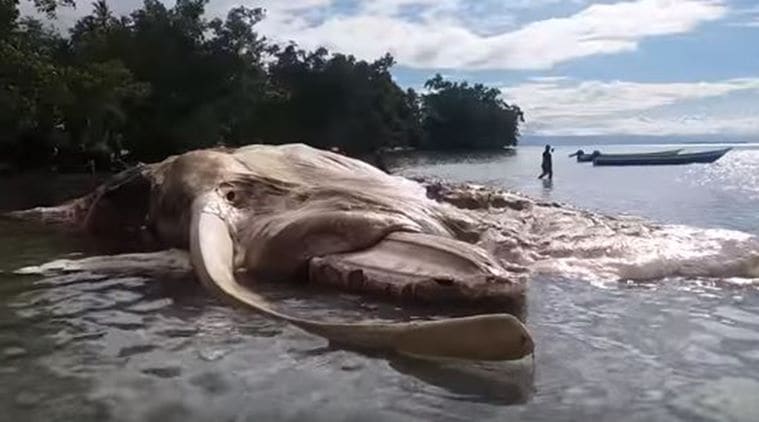Last week, a huge carcass found floating Indonesia water sent a massive headlines worldwide. Since then, the world was left wondering what is that gruesome discovery of a 15-metre long bloodied carcass. Blood seeping from the dead sea beast had turned the water near the coastline a bright red, which didn't stop locals from wading in for a closer look and snapping pictures.
As images of the floating carcass rocketed around the internet worldwide, questions began circulating: What is it? How did it get to an Indonesian island? And what does its presence say about climate change and whale migration habits?
It’s decomposing body made it difficult to know what the animal was, although it sent the internet into a whirlwind as people guessed what it could be.
While some thought it was a giant squid, and others thought maybe it was an elephant. Worse, the creature appears to have long, curved, bone-like tusks protruding from its slimy carcass.
Three separate marine experts said that the rotting creature was probably a baleen whale. Baleen whale
Baleen whales are some of the largest animals on earth, yet they feed on some of the smallest animals in the ocean. Characteristic baleen plates and paired blowholes help distinguish baleen whales from toothed whales. All cetaceans have a long, strong diaphragm which allows them to rapidly exhale as they surface and quickly inhale before submerging. The phrase "Thar she blows!" was coined by whale hunters who spotted the column of vapor as the whales exhaled.
Baleen whales were named for the long plates of baleen which hang in a row (like the teeth of a comb) from their upper jaws. Baleen plates are strong and flexible; they are made of a protein similar to human fingernails.

Baleen plates are broad at the base (gumline) and taper into a fringe which forms a curtain or mat inside the whale's mouth. Baleen whales strain huge volumes of ocean water through their baleen plates to capture food: tons of krill, other zooplankton, crustaceans, and small fish.

Judging by parts of a protruding skeleton, and what appear to be baleen plates used to filter out food, the scientists agreed it was most likely a whale. Decomposition gases bloated the whale into a very un-whale-like shape, and some of the noxious gases were seeping out.

“Trying to identify huge ocean creatures half a [world] away from a grainy video is tough to do; but once people start sharing specific information that begins to narrow in on defining characteristics of the creature, the identity begins to come into focus,” one of the experts, George Leonard, chief scientist at Ocean Conservancy.
Still, technically no one has yet proven it’s not an alien from outer space, right?
Source and reference :
Images from :
Livescience.com




















